
32 minute read
Energy Effi ciency
Three steps to improved UPS eff iciency
Chris Cutler, Riello UPS business development manager, explains how
Advertisement
improvements in UPS technology enable data centres and other critical sites to keep their energy use in check as they adjust to the ‘new normal’ of shifting demand.
Climate change has understandably taken something of a back seat in recent months as the world grapples with the coronavirus pandemic. But it remains the biggest challenge facing both the data centre industry and society as a whole.
Th e Covid-19 crisis thrust data centres into the public consciousness more than ever. Organisations across the country relied on the cloud to facilitate remote working in unparalleled numbers.
Total worldwide Microsoft Teams users shot up from 20 million to more than 75 million. While a staggering 4.1 billion minutes of virtual meetings occurred on the platform on a single day in April.
And where would we have been without the streaming services, the online gaming and shopping that lightened the lockdown boredom? Many broadband providers reported a 60% surge in weekday web usage. Netfl ix obtained an extra 16 million subscribers.
It’s forecast that many organisations will embrace the move to permanent remote-working. Indeed, a Gartner survey revealed that almost 74% of businesses will encourage more home working.
Th e likely consequences of such a fundamental change in our day
to-day way of life include a quicker migration to the cloud and a greater reliance on edge processing. Combine this with the continued rollout of superfast 5G, and data centres will face huge pressure to keep up with this increased demand.
All this comes at a time where the Uptime Institute’s latest survey of global data centre trends finds that energy efficiency across the industry is flatlining – this places operators in a precarious position.
How can they make sure that meeting demand doesn’t come at too much of an environmental cost?
Several solutions are at hand, such as exploiting liquid cooling and increasing rack density. While they can find further energy savings in another key piece of critical infrastructure – the uninterruptible power supplies that ensure a site’s clean and continuous electricity.
Here are three ways in which recent improvements to UPS technology can help sites keep their power consumption in check. The Uptime Institute’s latest survey of global data centre trends finds that energy efficiency across the industry is flatlining – this places operators in a precarious position Upgrading a legacy UPS Industry best-practice recommends replacing a UPS system around year 10-12 of its service life. But in certain circumstances, it may make sense to refresh the unit earlier in the life cycle.
This appears at odds with the recent trend for organisations to leave a longer gap between hardware refreshes as the gains of Moore’s Law begin to level off. Looking again at the Uptime Institute’s latest report, for instance, and it shows the most common timescale for replacing servers has lengthened from three years in 2015 to five years.
But when you’re talking about a legacy UPS, there’s every chance you can recoup the upfront infrastructure cost of upgrading through improved performance and higher efficiency.
For example, if you’re currently running an old, transformer-based UPS system, replacing it with a modern transformerless unit could produce anything up to a 5-6% efficiency boost.
Transformerless UPS’ have a flatter efficiency curve too, which means many models can reach high efficiency (above 95%) even at loads as low as 25%. Compared to a new unit, an old 400 kVA UPS could have a 3.5% difference in efficiency, depending on the applied load.
Then there are the other benefits of replacing old with new to consider. Transformerless UPS’ are smaller, lighter, and generate less heat, thus taking up less floor space and reducing your air conditioning requirements. Moving to modular UPS If you do opt for a hardware refresh, choosing a modular UPS offers significant scope for efficiency gains.
Many legacy UPS installs are designed to carry a much bigger load than they’ll ever need. Oversized systems are inefficient, waste energy, and cost more money to run and maintain.
The main advantage of a modular solution is that you only install the power you actually need. Modular UPS’ comprise a frame that you populate with individual power modules – almost like building blocks – to match your load and redundancy requirements. This eliminates any possibility of wasteful oversizing.
While the principle of modularity means that if your circumstances change, for example, a sudden surge in customers buying more rack space, you can quickly scale up by adding extra modules and cabinets.
Modular UPS’ offer the vertical and horizontal scalability to deliver capacity ranging from as little as 25 kW to more than 1 MW plus redundancy in a single UPS. This enables any site manager to future-proof their power needs without wasting unnecessary energy, air conditioning,
or floor space.
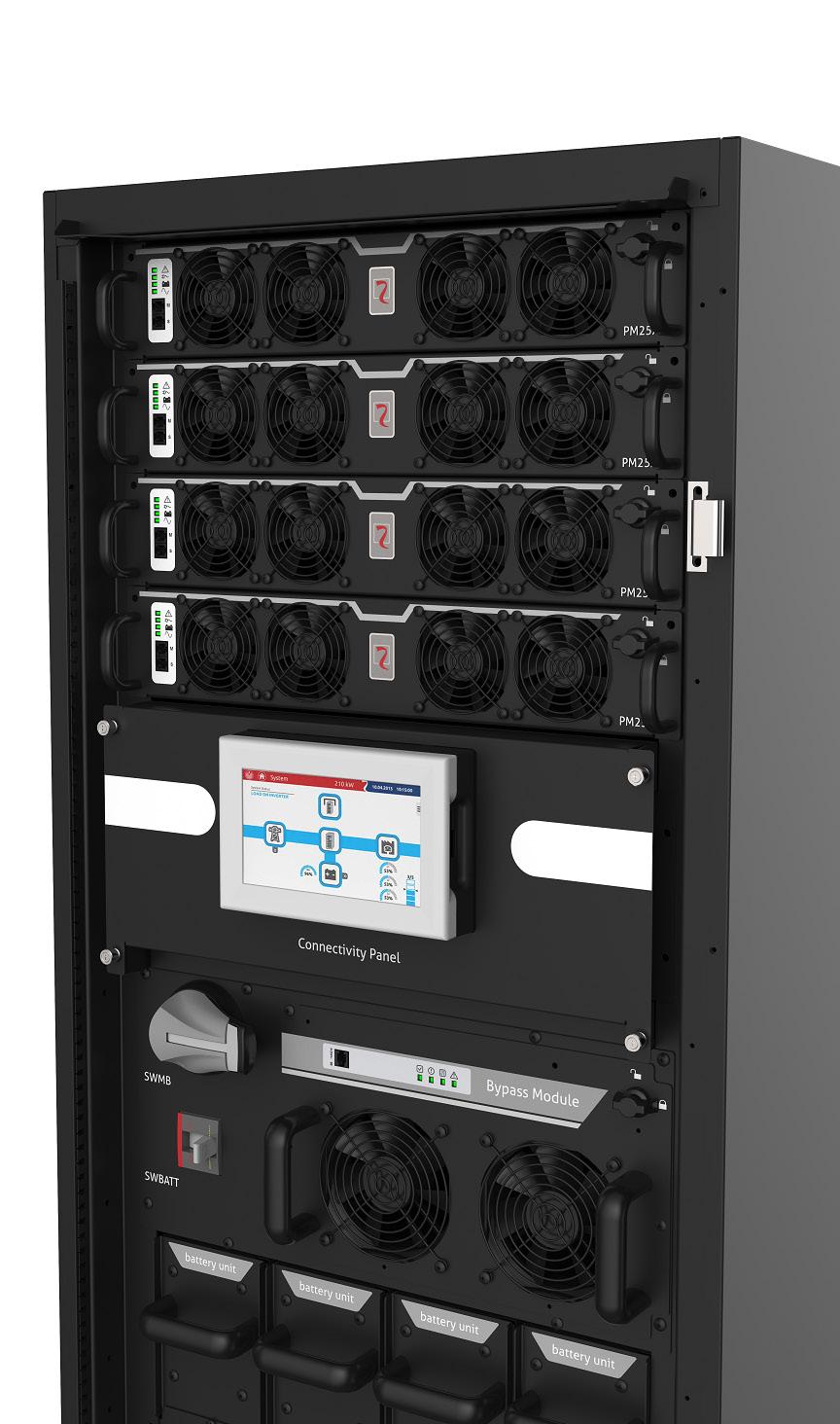
Modular solutions offer the added benefit that the modules – which are individual UPS’ in their own right with a rectifier, inverter, and static switch – are all hot-swappable, which ensures downtime-free maintenance.
Exploring ECO mode Practically every modern UPS manufacturer now offers some sort of economy or energy-saving operating mode.
In practice, these ECO modes see the unit run like a standby UPS. The bypass line (i.e. the mains supply) powers the load, while the inverter remains switched off. If there’s an interruption to the mains electricity, there’s a temporary break in continuous power of a few milliseconds while the inverter switches on and takes the load.
Running in ECO mode delivers operating efficiency of up to 99%. This is a considerable improvement on the typical 93-97% rating of most UPS’ in online mode. When even a 1% improvement in efficiency could equate to thousands – or even tens of thousands – of pounds worth of savings a year, the potential benefits are undeniable.
However, using ECO mode exposes your critical load to raw utility power without any of the power conditioning provided by double-conversion online UPS’.
That might not be too much of a problem if you have a stable mains supply and loads that tend to generate low harmonics. But if your site is prone
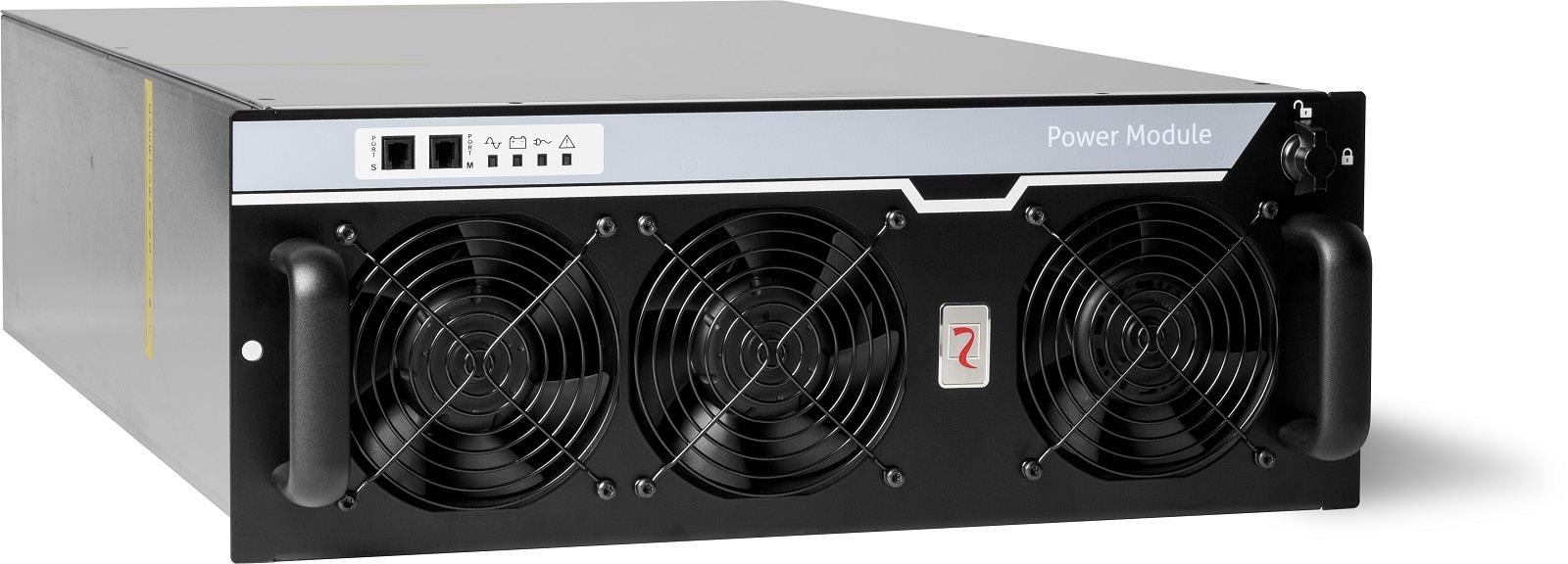
to power quality issues, then you could be compromising your reliability.
And if there’s an interruption to the mains supply, your equipment is also susceptible to the damage a short break in power can cause.
To try and overcome these drawbacks, suppliers have used improvements in firmware controls and electrical design to develop what’s known as Advanced ECO mode.
Often referred to as Active ECO, it is similar to standard ECO mode with the bypass line still powering the load. The crucial difference, however, is that the UPS’ inverter remains powered at all times. Even though it doesn’t carry the load current, it runs in parallel with the input.
This means that in the event of a mains failure, power transfer is far quicker – almost instantaneous – than standard ECO. Another advantage is that the inverter also absorbs harmonic currents and provides power filtering in the same way online operating mode does.
The extra energy required to keep the inverter powered at all times means that Active ECO is roughly 0.5-1% less efficient than ‘pure’ ECO mode. But it still offers higher efficiency than online mode.
Many mission-critical sites such as data centres are justifiably cautious about running in ECO or Active ECO mode. The balance of risk and reward between the energy savings on offer and potentially undermining resilience is too big an ask.
But while it might not be practical to run your UPS in one of these energy-saving modes all of the time, it could be an option when a site’s most critical loads are inactive, for instance overnight or out of hours.
There’s another possibility for larger parallel redundant (N+X) UPS systems too. This would see one of the units running in online mode as the ‘master’, with the other UPS’ supporting in ECO or Active ECO mode until the condition of the mains supply changes and they’re called upon to support the load too.
As demands on data centres grow in the months and years to come, effective use of modern UPS technology will prove pivotal in ensuring operators can keep offering a seamless service whilst stopping their energy use from spiralling out of control.

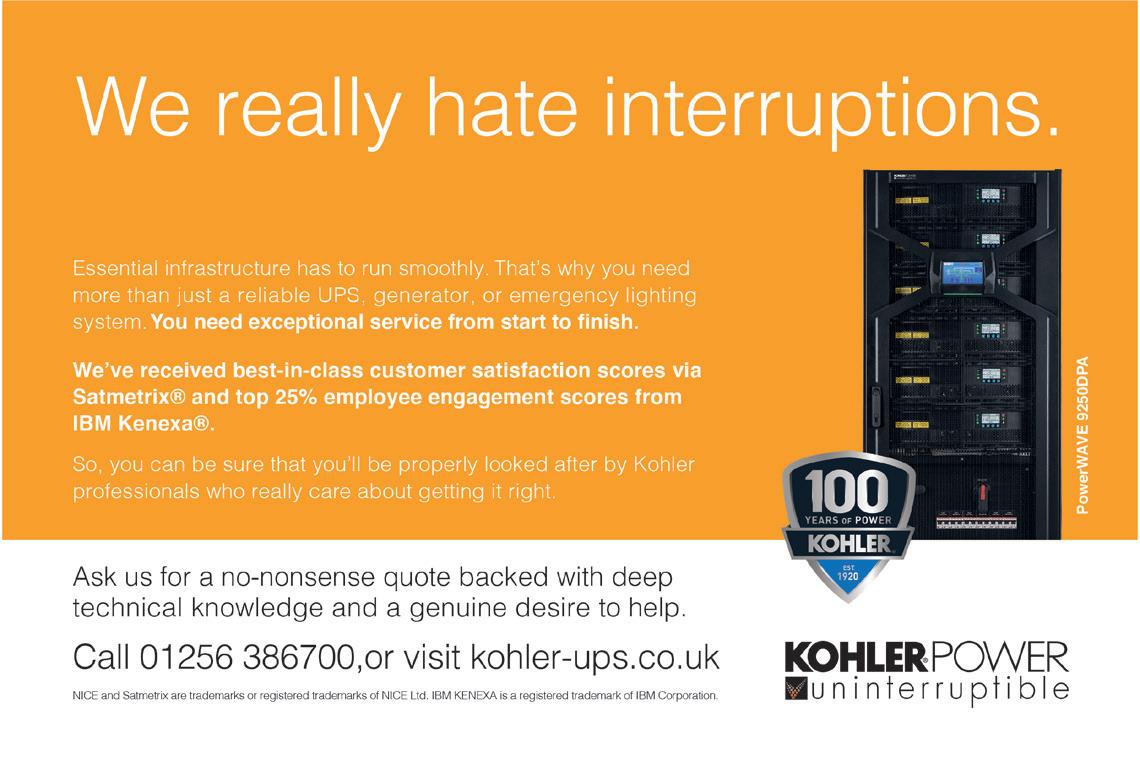
Old system, new revenue
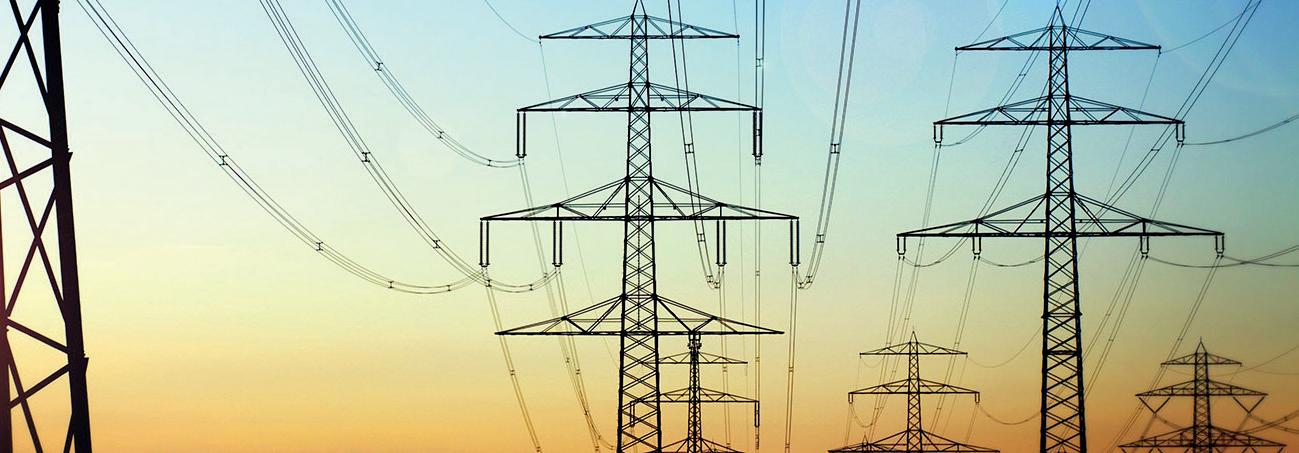

The energy grid is evolving and so is the relationship between energy sources and users. Here, Vertiv tells us how, with a little investment, your existing power infrastructure could help create additional revenue.

As governments, regulators and consumers continue to push for lower carbon emissions and electricity costs, the whole power generation industry is undergoing change. Vast wind farms, both on and off shore, are providing some of that low-carbon energy but it is intermittent. Every time a high or low-pressure system comes across the area where the turbines are sited, the speed of the wind goes up or down and the electrical power output rises or falls. Th e same applies to other renewable energy sources, like solar farms when clouds cover the solar panels or the time of sunrise and sunset changes.
Th ese power systems are connected via an electrical energy grid network and the parameter which ties the whole grid together is frequency: the measurement by which the whole system is judged. Too much power the frequency goes up, too little and the frequency falls. Across Europe, energy regulators provide strict limits to which the frequency must be kept within.
The effect of renewable energy sources Grid operators have a forecast of the days weeks and months ahead for the energy that a country requires. In the UK, the National Grid purchases electricity from a set list of generating stations that have tendered for the supply of electricity. It obviously chooses the lowest priced tenders fi rst. So, if the predictions are correct, then everything is ok, supply equals demand and everyone is happy. But then, as we discussed earlier, the weather comes into play.
When frequency starts to move in an unexpected way (from the prediction models), then the grid operator needs either less energy (frequency too high) or more electricity is required to be pumped into the system (frequency too low).
Th ese services have a variety of names and abbreviations, but are basically chunks of electrical power pumped into the system very quickly, some within one second of a frequency event occurring. Conversely, if large users can switch off demand (maybe transferring to generators or batteries, or in the case of industrial processes, just switching off ) for a short period of time, then the grid operator will pay for these responses.
Around the world, anywhere where there is a need to reduce CO2 output from power stations, or where large solar or wind is installed, there is a need for these ‘on demand’ grid support services. Th ese services can generate a lot of additional revenue for the organisations concerned. In the UK, the potential revenues from these services are published online and there are a number of organisations that do quite nicely from this income.
Power systems: A new revenue source Th e prospect of new revenue sources has also attracted investors from a number of organisations, and even the UK government is investing (perhaps a little late).
So how does this aff ect your business? Basically, everyone can have a slice of the pie.
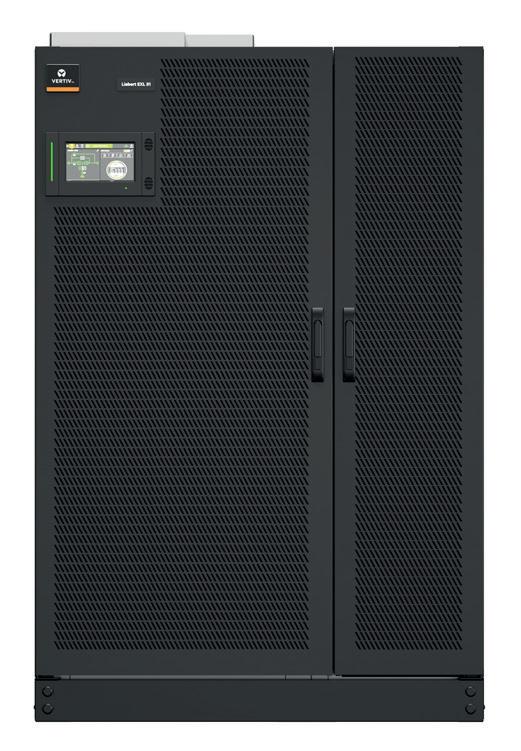
Th e tenders to supply energy services are competed for by a wide variety of organisations. Most of these are so-called ‘aggregators’. Th ese companies bring together groups of smaller generators, storage systems or other power consuming equipment, install special equipment on: • Uninterruptible Power Supplies and battery storage systems • Large fridges • Pumps and heating systems on industrial vats and tanks • Large power consumption items like crushers and mixers in industry • Gas and diesel generators.
When required, the aggregator activates the system which triggers either the generator/UPS/battery to push power (or refrigeration, pump, crusher to turn off power) into the grid. Th is is a very simplistic description and some complicated engineering is required to safeguard the private producer from the local grid network and vice versa. In return for carrying out these arrangements, doing the invoicing and distribution of funds, the aggregator takes a commission from the amount paid by the grid operator.
UPS systems and generators: An alternative for grid integration For organisations with enough technical skills and resources, there are also alternative ways to integrate with the grid. Specialist suppliers, including Vertiv, have developed systems to enable data centre operators, as well as other commercial and industrial organisations to take part in these schemes and generate revenue from existing, or newly-acquired, UPS and generator capacity.
Grid integration with the UPS: Risks vs rewards Th ere might be some concern that using infrastructure such as an uninterruptible power supply or generator for these kinds of grid integration activities might introduce some additional risks for an organisation. Th at’s a legitimate concern but only a proportion of the capacity is ever
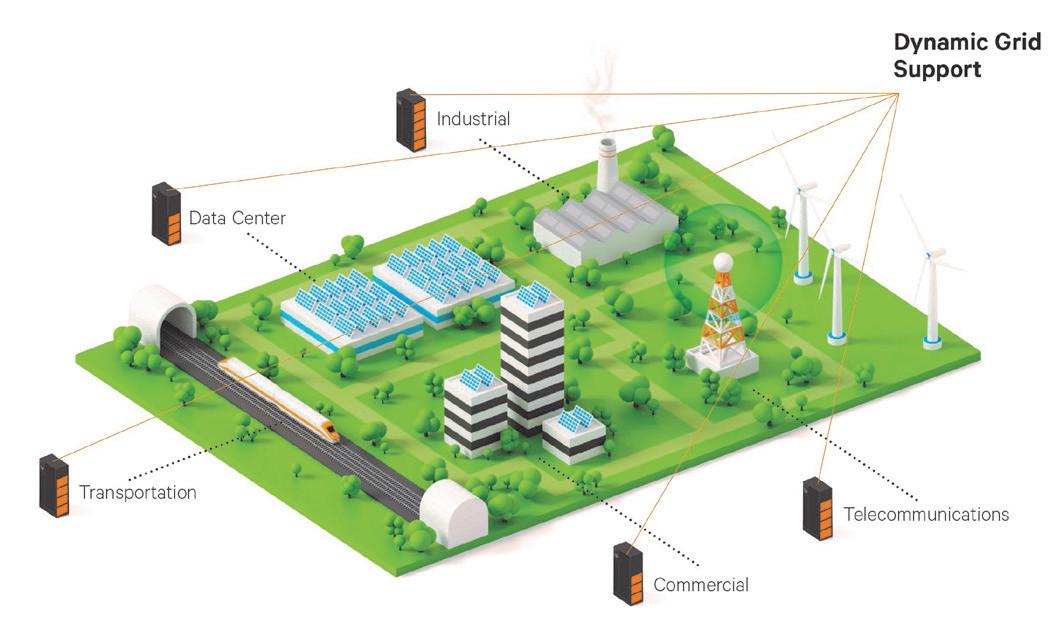
used for grid support services – there is always suffi cient resiliency capacity to cover any incidents should they occur.
So, with the right strategy, grid support services should enable a lot of innovation in the way users and grid operators interact: • It could be that fewer new power stations need to be built as the traditional electrical grid inertia provided by power stations can be provided by batteries. • More electricity could be generated from renewable energy sources, like solar power systems, and stored for use overnight – something
Vertiv was involved in in 1896. • Deserts and wastelands could be converted (in a sustainable way) to solar stations with batteries and high voltage DC connections over thousands of miles to centres of population – say the Sahara Desert to
Italy or Spain. • Countries supplying all their power from ‘natural’ sources or using batteries at night. • Lower gas, coal and oil consumption worldwide. • Batteries could contribute to recharge our future electric cars, as well as our houses • Th e Internet of Th ings will integrate local supplies and users of electrical power leading to lower electricity prices.
Using existing resources like large chilled warehouses, batteries and pumping systems many C&I organisations, not just in the UK, will be able to generate income. Th is income will vary depending on the power consumed, but the potential could be huge for property groups and owners of chains of properties.
Vertiv’s Dynamic Grid Support feature enables businesses to increase adoption of renewable energy sources and slash electricity costs. Th e feature that allows the Dynamic Grid Support feature is currently available for the Vertiv Liebert EXL S1 UPS model and can be retrofi tted to existing installations.
Could BACS really help save the world?
Through green integration, is it possible that building automation and control systems (BACS) could help reduce emissions and subsequently, help save the planet? Raul Simonetti, HVAC/R corporate business manager at Carel, tells us more.

owever dramatic the title may sound, there are good reasons H to believe that BACS may play a prominent role in reducing the energy used by buildings and their related greenhouse gas (GHG) emissions.
Buildings in the EU consume around 50% of final energy usage and are responsible for approximately 36% of all CO2 emissions in the Union, as stated by the EU’s EPBD (Energy Performance of Buildings Directive), with similar values in other parts of the world.
Given that the EU aims to decarbonise its building stock by 2050, an extensive range of green solutions will need to be deployed in order to reduce buildings’ direct and indirect GHG emissions to zero.
The F-gas phase-downs being implemented worldwide following the Kigali Agreement are focused on reducing direct GHG emissions by minimising the consumption of F-gases in various sectors, notably the HVAC/R sector, in which refrigerants are emitted due to leaks from the systems where they are used (end-of-life venting is also a problem, but life-long leakages are much more significant).
Policies such as the EU’s Ecodesign acts are designed to place products on the market with high energy efficiency, so as to perform the tasks they have been designed for while minimising energy input.
The target for these policies is the reduction of energy consumed, meaning both the electricity generated by power plants and the primary sources directly consumed by the appliances. The consequence is a reduction in indirect GHG emissions, which in fact have a greater impact than direct F-gas emissions, as much as 80% to 2% (the 18% difference is due to direct emissions of N2O, CH4, PFCs, SF6, NF3). Buildings in the EU consume around 50% of final energy usage and are responsible for approximately 36% of all CO2 emissions in the Union
Is this enough to decarbonise? Unfortunately not.
Fossil fuels will have to give way to renewable energy sources (photovoltaic, wind, hydro, others) and energy storage systems (batteries, compressed air, e-hydrogen, e-methane, thermal storage, others).
Renewables are already well-known and can be further used worldwide. The main advantage of renewables, the fact that they do not generate GHGs at the point of use, is unfortunately offset by their inherent instability.
For instance, PV electricity is not generated during the night, wind power is absent when there is no wind, and so on. Therefore, there is a strong need to develop and run energy storage solutions alongside renewable-based power generation systems, as part of the renewable energy produced when available will need to be stored for later use.
All of these green energy generation and storage systems will interact with buildings, vehicles and products, in general, to provide the required services and execute tasks. The interactions will not be free of constraints; on the contrary, they will very likely be controlled by controllers and supervisory IoT systems with different levels of hierarchy, in order to exploit the availability of green energy resources to the greatest possible extent.
Focusing on buildings, BACS will play a crucial role because, based on statistical estimates, they could reduce the energy consumed by 20% to 50% by properly controlling and modulating all of the connected devices (the range is quite wide due to the various types of buildings and world climates).
Please see the image below, which can help better explain the importance of BACS in saving energy. If we had two identical AHUs serving the same space, the first one (blue) with a control system, part of a larger BACS, capable of simple on/off control of the devices (coils, dampers, etc.), and the second one (red) with a fully modulating controller, the ‘red’ AHU would save around 37% of total primary input energy compared to the ‘blue’ one, simply because the ‘red’ control system could
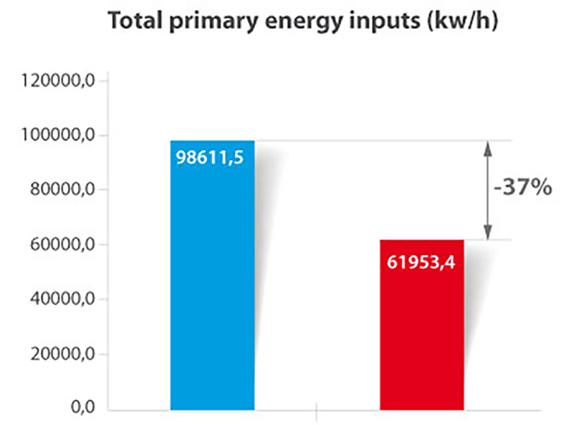
fully exploit the modulation capabilities of the ‘red’ devices:
This shows the importance of BACS for buildings and, by inference, of control and IoT monitoring systems to take full advantage of the integration of diversified resources (renewables, energy storage, buildings, devices of any type) to reach the goals of providing liveable conditions or process set points while minimising (zeroing) GHG-related emissions.
BACS and IoT monitoring systems, however, can do much more. In addition to reducing the energy input of systems and buildings while accomplishing the required goals (a fundamental task, of course), they can also inform users of anomalies, or of preventative maintenance ahead of disruptive downtimes, or simply dispatch information and suggestions on how to better use the buildings and their services.
Green integration will mean, in brief, full integration of green energy sources with buildings, vehicles, devices and equipment, in order to do more than we do today while minimising, if not eliminating, GHG emissions.
Keeping your options open
Here, the experts at Power Control highlight the value of UPS systems when it comes to energy storage and renewables.
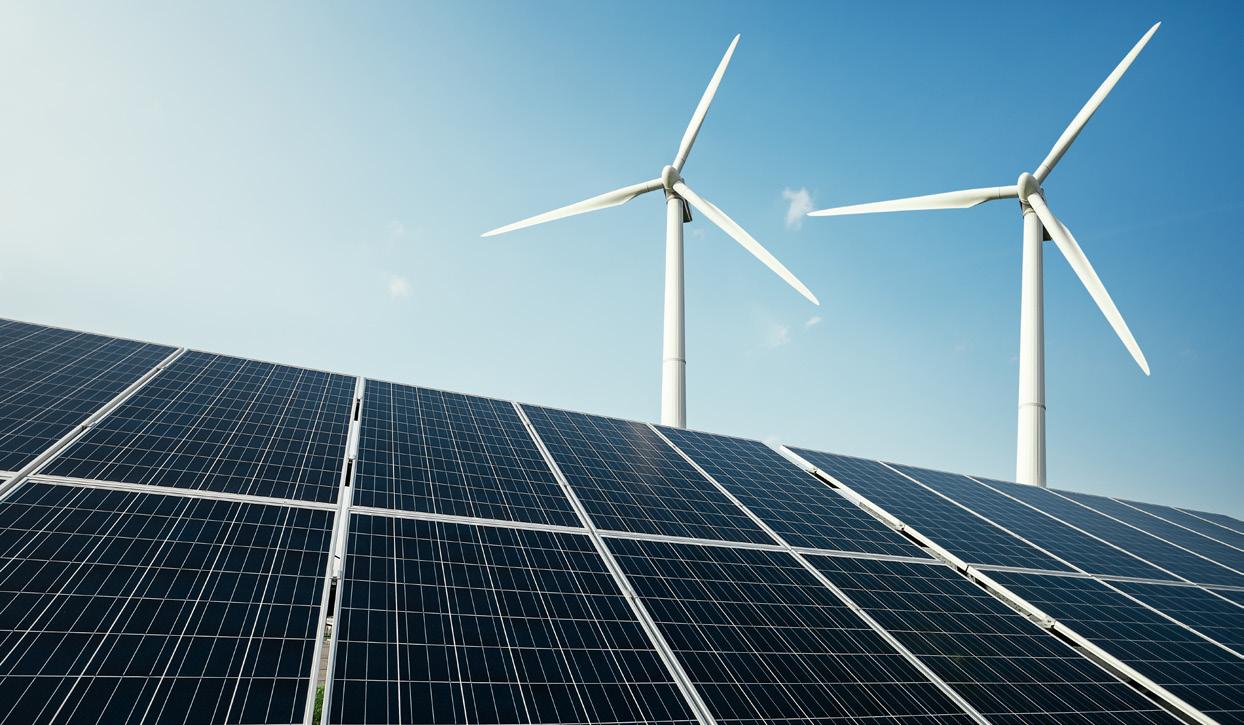
evelopments within the power industry are happening at D accelerated rates. Technological advancements in other sectors are having a domino effect on the power grid, resulting in increased pressures being put on the electricity industry to transition to a ‘smart grid’. Variable renewable energy (VRE), such as wind and solar, are being utilised to form decarbonised electric power generation.
For VRE to be successfully integrated into the grid, the future availability and cost of energy storage technologies are critical. Until recent years, the price of lithium-ion has made the technology seem unattainable. However, over the past decade, these prices have dropped significantly and the potential economic value that energy storage could bring to the industry has surpassed any preconceptions.
With that said, there are still many hurdles to consider before VRE gains prevalence. For example, without firming the production in a cost-effective way, the industry would not be able to compete with fossil fuels. Options for energy storage Although the concept of storing energy is not new, batteries have been storing energy since the early 1800s, innovative technologies have led to the diversification of now utilising them as storage devices. They are evolving into being used to store energy from on-peak renewable sources, ready to be released when there is a greater need, such as in central, de-central and off-grid solutions.
Lead acid was among the first battery technologies to be used for storing electricity. However, these batteries have a limited energy density and a working life that is not long to be economically viable for use as a grid storage device.
The rise in electric vehicles (EV) has contributed to the drop in price of lithium-ion. This technology is now 85% cheaper than it was ten years ago, and is expected to continue to become more accessible in the future. Li-ion batteries have one of the highest energy densities of any battery technology today, they have a longer working life and are capable of increased lifecycles.
Additionally, because they can be easily sized, lithium-ion batteries are more likely to be used to solve curtailment issues, particularly behind the meter and off grid sites.
What are the benefits of energy storage?
Maximise time of use rates
Batteries can store energy produced during low price periods and discharge it during high value periods. It is also beneficial for mitigating the shift in peak demand periods. For example, peak demand periods shift to the evening when there is no sun or wind to generate electricity.
Improve reliability and resilience
Just as a company invests in backup power on individual bases for specific devices or critical systems, the same concept applies for scaling up to an energy storage system at mains grid level.
Batteries are charged during low demand and discharged during high demand to help with balancing the voltage and frequency. The risk of unexpected VRE disconnection is also substantially reduced. Power outages can be costly for the operator and so having reliability measures in place is key to business continuity.
Integrate diverse resources
Energy storage systems not only smooth out the delivery of variable resources but can also support the efficient delivery of electricity for inflexible baseload resources. When demand shifts and baseload resources cannot react quickly enough, an energy storage system will inject or extract electricity to match.
Environmental benefits
With the UK’s target to bring all greenhouse gas emissions to net-zero by 2050, government initiatives are in place to encourage the switch to renewables by businesses and consumers.
Energy storage sits at the heart of increasing renewable energy uptake, it accelerates the broader adoption of renewable energy by improving the overall efficiency of the power grid. On a more local level, an energy storage system has no emissions so it can be placed anywhere within a facility and have no immediate impact on the environment.
Peak looping for high demand and EVs
Energy storage configured for peak looping is an ideal solution for applications that demand more power than what is available from the supply. A typical example of this would include EVs.
With the increasing popularity and a shift towards EVs, there is an increased demand for shorter charging times. EVs now require larger chargers, some of which consume 250kW to ensure rapid charging.
However, some charging stations with multiple rapid chargers are restricted by the maximum available supply. For example, if the local supply is only 200kW, the capacity isn’t large enough to supply ten chargers with a maximum capacity of 50kW at peak demand.
Battery storage systems resolve this problem by enabling batteries to charge from a smaller supply whilst enabling higher peak power outputs directly connected to the EV charging infrastructure. When there isn’t enough supply to meet the demand, this can prove to be a cost effective and environmentally-friendly solution.
Additionally, the batteries can be used as an uninterruptible power supply (UPS), keeping the EV charging throughout a mains failure and preventing some chargers from having to be reset or locking when power is lost.
Participation in demand response programmes
Energy storage opens up demand response programmes. Unlike the traditional demand response, this emerging technology allows consumers to shift from an event-based demand response, where utility requests the shedding of a load, towards programmed utility price signals. A 24/7 demand response where consumers see incentives for controlling their load.
Demand response will also help the grid to maintain stability during periods of high supply and low demand, giving financial incentives for grid operators too.
Where do uninterruptible power supplies (UPS) fit? “As lithium-ion technology becomes more commonplace among UPS specialists, a UPS’ usage as an energy storage system will increase. Existing UPS topology can be modified effectively to grid tie and charge and discharge without the need for separate inverter and charger systems. UPS’ inherently have advanced battery management that can be used to ensure balanced charging and safety cut-outs in the event of thermal runaway,” comments Graeme Tucker, director at Power Control.
As with typical energy storage systems, the modified UPS is connected to the grid. The batteries are charged during low electricity price periods, storing that power and discharging it back to the grid when necessary. The reasons for which may be to smooth out the delivery of variable or intermittent resources (renewables), or to support the efficient delivery of electricity for inflexible baseload resources, injecting electricity as and when required.
The amount of power that can be stored/pushed back on to the grid is dependent on several variables. One of which is the number of batteries used. It is possible to configure the bespoke energy storage system with a large UPS system and a few battery strings or a small UPS system and many battery strings. The variations affect power availability and runtimes.
A modified UPS can also be used to manage battery storage, discharge and charge in applications requiring peak load looping. In this instance, the UPS charges the batteries at a constant rate while having the capacity to supply higher peak demand. Some UPS’ can also be used in conjunction with solar, hydrogen or other green energy sources to balance the peak load between the energy source, batteries and mains connection.
The smart substation
Medium voltage substations are marvellous inventions, but they don’t come without their problems. Thomas Naul, utilities director for power systems, UK & Ireland at Schneider Electric, gives us six ways to mitigate some of the challenges.
The energy sector is shifting to a decarbonised, decentralised and digitised model, and the utilities industry needs to adapt alongside this change, or it will struggle to keep up with end-user expectations for green and clean renewable power.
Ofgem’s recently announced five-year investment programme to deliver greener energy networks has made it clear that minimal costs should be passed onto consumers to prevent enthusiasm for green energy from waning.
One of the great challenges utilities face is how to manage the increased integration of distributed energy resources (DER) into the grid and the growing pressure to keep down costs and optimise assets, while at the same time improving and maintaining power quality and service continuity.
Smart technologies are being introduced to medium voltage (MV) and low voltage (LV) substations to combat these challenges. Substations are prime candidates for the innovative smart capabilities that are becoming a crucial element of a digital national grid, because substations play a central role in electrical power distribution systems. They hold the switches, capacitors, transformers, and other assets utilities need to keep grid power flowing, balanced, and routed appropriately.
So, what are the ways in which smart grid technology can solve medium voltage substation challenges?
Managing and optimising assets remotely Utilities are under constant pressure to reduce their capital and operational expenditures as the industry shifts to more cost saving technologies. This means they must optimise assets and manage them more efficiently in order to extend their life span and reduce operation and management costs. Once the sector has all their ducks in a row with the basics, then they can look at how to juggle both keeping costs low and getting the most out of their strengths whilst maintaining the high-quality power and service.
Smart investment in smart meters Smart meters are an enormous investment for utilities, in fact it is estimated that there will be 800 million smart meters deployed worldwide by 2020. A key benefit of deploying these smart meters is their ability to both empower consumers and improve their energy usage. However, investing in them may also result in numerous costs.
For example, some utilities have not been able to reap the financial benefits from the billing perspective as of yet. In the UK, the rollout is expected to be completed by 2024, although a ‘false start’ with the digital limitations of SMETS1 models initially held up adoption among consumers.
For utilities to reap the benefits, they should leverage smart meter data to optimise their distribution networks. They can do this with smart meters that communicate through power line carrier (PLC) technology. Through this method, utilities can add value to their assets that are currently in place. All connected smart meters communicate through the substation they are attached to, making medium or low voltage substations a critical point of a PLC-based smart meter measurement aggregation.
Providing a quality service Another way utilities can solve substation challenges is by improving their quality of service. One of the most critical elements of quality of service is minimising customers’ interruption time. Even short interruptions are inconvenient, disruptive, costly, and potentially damaging and dangerous.
A key factor when improving the quality of the service is the location of the distribution grid. Underground distribution grids typically have fewer interruptions and better performance than overhead grids, which are vulnerable to vegetation and storms.
As it is not always technically or economically feasible to move overhead lines underground, utilities can focus on smart technologies that reduce the difference in performance between overhead and underground grids. This can be achieved by adding smart reclosers in distribution network feeders where transient self-clearing faults frequently occur so they can reduce outages, allow for rapid recovery, decrease the number of end-users affected by an outage, and reduce the amount of non-produced energy and non-distributed energy.
Smart fault passage indicators (FPI) offer ways for the utilities to increase quality of service for a maximum of grid users, especially when switches are remote controllable. It also enables grid operators to optimise maintenance activities if it is necessary for field crews to fix assets on the site. The FPI also allows for faster diagnoses of issues and can warn connected distributed generation sources of the feeder status to avoid islanding the grid.
Monitoring and managing voltage fluctuations Voltage fluctuations are a major pain point for utilities and a key challenge they need to overcome. They can be costly, inconvenient and affect power quality, safety, and reliability, which can damage customers’ facili
ties and equipment. The task of managing fluctuations has become more difficult as an influx of distributed energy resources (DER) have been integrated into the grid. Further to this, the supply of weather-dependent sources of energy like solar and wind power cannot be predicted with complete accuracy or turned on at the push of a button, which forces utilities to monitor and adjust power levels more actively.
To combat these fluctuations and mitigate the risk of under supply, utilities can harness an array of technologies. One way is with smart transformers that can meet dynamic voltage regulation needs, and are an appealing option for utilities that are planning for how they’ll meet their future distribution network challenges.
These smart transformers include actuators that can help manage voltage, as well as active and reactive power. They automatically regulate the medium voltage to increase or decrease the low voltage and ensure it keeps within the contractually allowed limits. Alternatively, utilities can use feeder switches that have intelligent local controls which can constantly monitor the system to identify and react quickly to fluctuations and faults.
Balancing LV feeder loads Another obstacle smart grid technology can solve in the substation is when the feeder load is unbalanced. This can happen when low voltage ends of the distribution networks are unbalanced between transformers, between low voltage feeders within a transformer, or between the three

phases of a particular transformer. Finding this feeder load balance is becoming more difficult as utilities cope with the growing addition of DERs, which range from supply-side to demand-side resources, and can magnify the imbalance because of an unsteady power influx.
If utilities can better balance LV feeder loads, they can achieve optimal performance and reduce energy loss, which, in turn, cuts costs. Smart technology can improve the feeder load balance by equipping LV readers with energy meters that connect to the remote terminal unit (RMU) in the substation and can calculate imbalances in real-time, as well as rebalancing loads using repartition units.
Steer clear of unwanted islanding Intentional islanding is when a distributed generator continues to supply power to a portion of the grid when the main public electrical power grid is no longer present. This is a useful tool for utilities in an emergency when the grid is showing signs of impending failure.
However, unwanted islanding is a safety hazard and can lead to damage to the distributed generator unit, network components, and customers’ equipment. It most commonly occurs when protection devices located at the DER site don’t properly detect the occurrence and therefore don’t trip, or when the incorrect operation of a switch or breaker creates islanding conditions.
Unwanted islanding is becoming a more common occurrence because of the injection of DER, along with the rise of microgrids connected to the distribution network, which can disrupt system stability. Anti-islanding protection based on communications with the MV/LV substation creates a more flexible, localised option.
For example, smart fault passage indicators may be able to warn connected, distributed generation sources of feeder issues and by doing so help avoid islanding part of the grid. Smart technology can be used to force a disconnection by asking the feeder components to communicate with all attached DER.
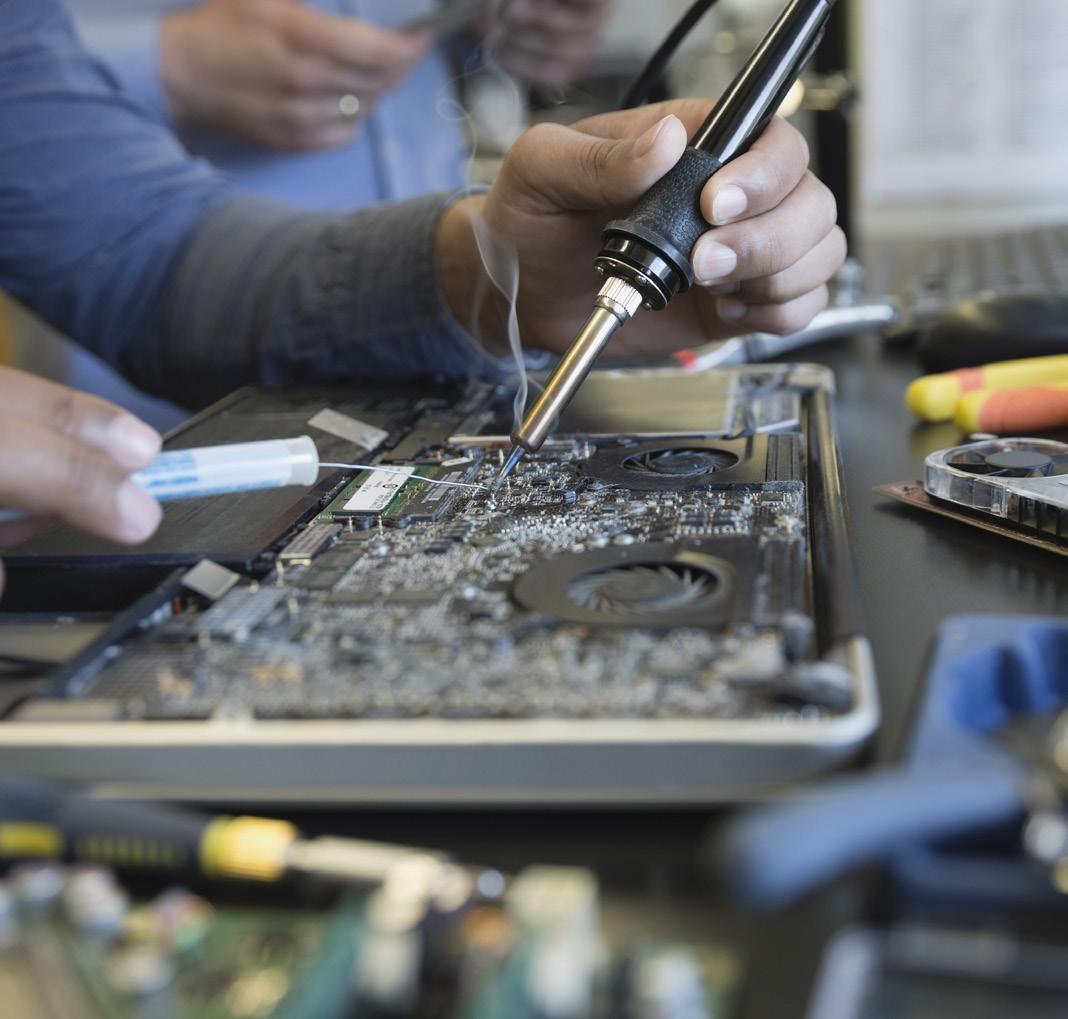
Moving forward and thinking smart Utilities today face ever higher expectations to maintain power quality and achieve greater service continuity. With the widespread integration of distributed energy resources all along the network, more smart grid capabilities are being introduced into MV/LV substations to meet these expectations.
MV/LV substations lie at the heart of the needed evolution of the electrical distribution network. Now is the time for utilities to formalise their roadmap for MV/LV substation and grid transformation. Smart technologies are now available to enable such a transformation affordably. Utilities companies that have begun looking ahead to a greener future and are investing in smart technologies will be able to equip the skills to build a healthier, more resilient energy network that drives sustainable economic prosperity and aligns to the national goal of net zero by 2050.
If you sell products or work on projects within Power, Lighting, Fire Safety & Security, Energy Efficiency and Data Centres, make sure you enter:











Visit awards.electricalreview.co.uk


Your business and your team could be celebrating in the spotlight at






the ER & DCR Excellence Awards Gala Dinner on 20 May 2021 at the




breathtaking Christ Church, Spitalfi elds in London!
Sponsors:











